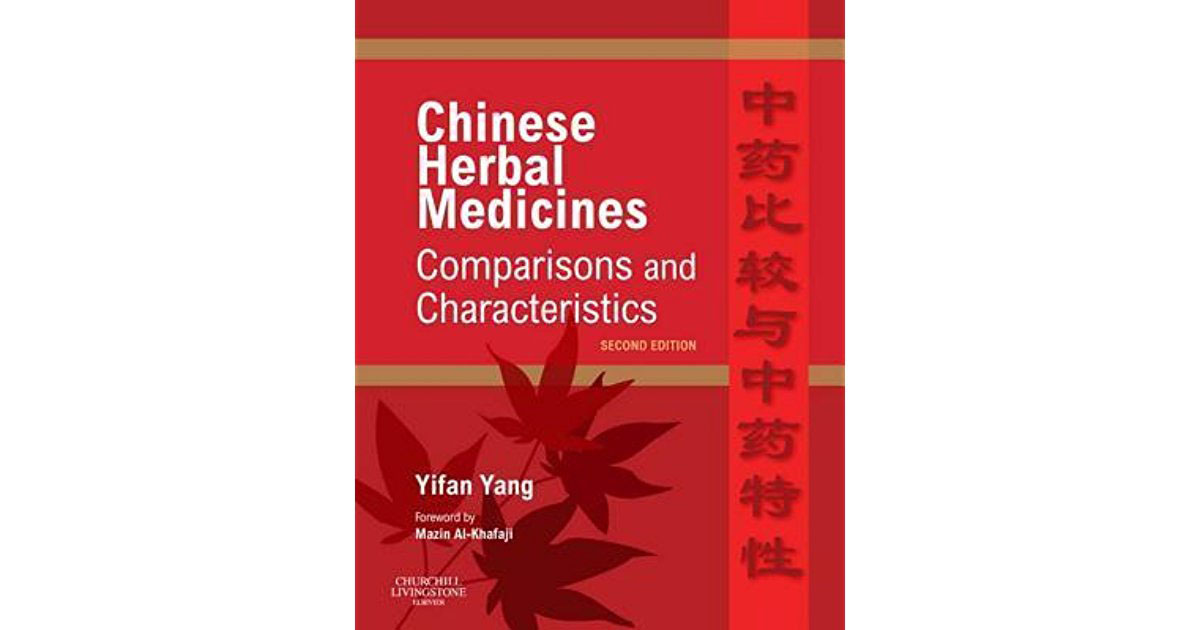by Michael Tierra L. Ac., OMD, AHG
I recently picked up a treasure of a book entitled Chinese Herbal Medicines: Comparisons and Characteristics, by Yifan Yang, published by Churchill Livingstone (2002).
It is obviously written for the advanced Chinese herbalist based on the fact that it presupposes a basic understanding of TCM terms, diagnostics and so forth.
However, for the non-Chinese herbalist there is much that can be learned, and the herbs are presented in both Pinyin Chinese as well as pharmaceutical Latin.
These days I seldom buy an herb book that I intend to read from cover to cover but this 200 page volume is an exception.
It describes the major herbs of the Chinese materia medica as used in the traditional Chinese categories such as release exterior, clear heat, extinguish wind, qi, blood, yin and yang tonics and so forth, distinguishing between their clinical use and differentiating them according to their strengths.
I like the fact that each chapter is presented in a question and answer format.
It also offers a number of bite-sized ideas to facilitate a particular herb being remembered in frontline clinical practice.
Examples are:
- “Why is Xiang Ru Herba Elsholtziae seu Moslae called ‘summer Ma Huang Herba Ephedrae?”
- “What are the different indications for the use of cinnamon twig and ephedra?”
- “How can Bai Shao Paeoniae Alba soften the liver?”
- “What are the characteristics of the herbs that tonify the Yin?”
— Just as an aside, has anyone ever asked an herb found anywhere in the world about its ethnicity? Studying this book has evoked similar questions regarding non-Chinese herbs.
For example, when I consider the important sedative herb, Polygonum multiflorum stem (ye jiao teng), the vine of the well known hou shou wu root used as a blood and longevity tonic particularly to treat insomnia and restlessness (by tonifying blood), I think of mirroring blood vessels and nerve fibers throughout the body, particularly in relation to cerebral circulation.
This conjures a possible understanding for passionflower (Passiflora incarnata), also a vine that may suggest its effects on enhancing the central nervous system also by affecting cerebral blood circulation.
Such an understanding offers clinical herbalists more practical understanding for which passionflower might be more appropriate than valerian or skullcap for instance.
Interestingly, there’s positive corroboration in Sharol Tilgner’s book, Herbal Medicine, where she ascribes passionflower’s secondary indications as a cerebral vasorelaxant.
It is one thing to say that an herb is good for calming and relaxing the nerves but it is obviously important for herbalists to know which herb in a category is strongest in a property and when that stronger herb is the most appropriate? The same is true of the mildest herb in a category.
One can then extrapolate from this excellent book a similar approach to depicting the relative differences and strength between all the herbs in a given category, such as zizyphus seeds, passionflower, polygonum stems, hops, albizia flower, oyster shell and valerian in the sedative herbs category.
Unfortunately this is not usually done in most herb books.
Thus, the information in this book can help many herbalists to classify and use non-Chinese herbs according to the TCM energetic system.
While many books that have attempted to do this are confusing, Yifan’s book unintentionally offers a valuable template as a kind of ‘checks and balances’ for understanding how to classify and use non-Chinese herbs within the timeless Chinese herbal system.
Chinese Herbal Medicines appropriately makes no attempt towards a cross-cultural understanding of Chinese physiology and Western scientific physiology.
It is not a book that aspires to explain Chinese Herbal Medicine with its ethnic and esoteric terms to the non-Chinese practitioner.
However its value is such that the book may inspire many non-Chinese herbalists, to deepen their understanding of traditional Chinese terms and to then apply these for a traditional, clinically useful understanding of any herb.
Madame Yifan Yang studied both traditional and modern Western medicine and was a graduate at Beijing University of Traditional Chinese Medicine.
She subsequently received a Master’s degree in Chinese Herbal Medicines and Formulas and worked both as a doctor and teacher at Beijing University. In 1990 she moved to the Netherlands where she works in a TCM clinic. She lectures on Chinese herbal medicine in colleges in the Netherlands and Belgium.
This book is a welcome addition to the library of any herbalist who has an interest in Chinese herbal medicine Being only 200 pages, it is a book that one can read from cover to cover and should help us all to become better clinical herbalists.

